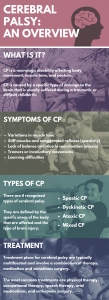A preliminary study reported in Developmental Medicine and Child Neurology found that low doses of pamidronate increase bone density in children with spastic cerebral palsy (CP). All the children in the study had spastic quadriplegia, a severe form of cerebral palsy characterized by muscle stiffness in all four limbs and the mouth and tongue. These cerebral palsy victims often have decreased mobility and cognitive deficiencies. The hope is that this new drug improves bone density, improving a weakness in many cerebral palsy victims who, because of their decreased mobility, are at higher risk for fractures.
The University of Nebraska Medical Center in Omaha studied 23 children with severe cerebral palsy and could not walk. At the beginning of the study, the patients’ bone mineral density was below the normal level for children their age. After a year, the Nebraska researchers found significant increases in bone mineral density. Nine children had at least one fracture and up to five fractures prior to the study. Only one fracture occurred during the 12-month treatment period and the average annual fracture rate fell from 0.98 to 0.004 per year.
What a blessing it would be if science could make more dramatic advances for cerebral palsy victims. This drug is not a panacea for people who suffer from cerebral palsy. But progress is progress. Let’s hope it keeps coming.
Recent Cerebral Palsy Innovations and Findings
There have been a lot of innovations since this post was first written 13 years ago. In 2019, we have several technological advancements are changing what we can do to help children with cerebral palsy live their best lives.
Self-Initiated Prone Progression Crawler (SIPPC)
This device links the child’s clothes to a skateboard that has a machine-learning algorithm that assists the child in learning to crawl. It also has a transmitter cap that may provide researchers with valuable information to see how to brain process learning to crawl with this device. Is every insurance company going to pay for this kind of thing? This is the reason that you want to maximize your child’s recovery in a birth injury case. You want to give your child every advantage. And that costs money.
Cell-Based Technologies Like Autologous M2 Macrophages
Stem cell-based therapy is one of the newer treatment modalities for cerebral palsy and probably the one with the most upside potential for changing the lives of cerebral palsy patients in ways that we cannot dream of today. One of these therapies involves macrophages. These are cells that repair brain injuries by repairing the harm done to the brain tissue and blood vessels during childbirth from lack of oxygen. This study underscores the potential promise of this therapy.
 Maryland Injury Law Center
Maryland Injury Law Center



